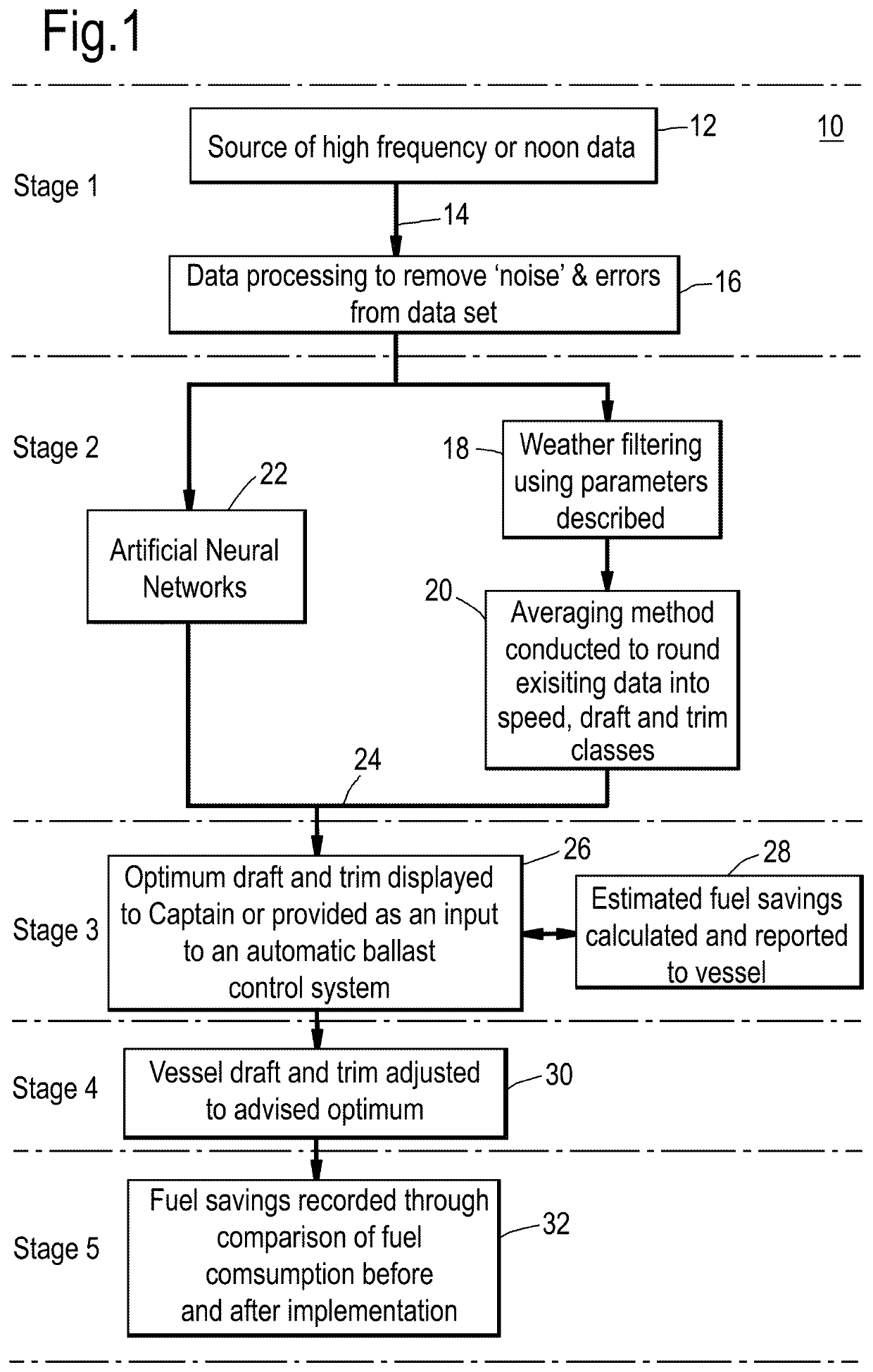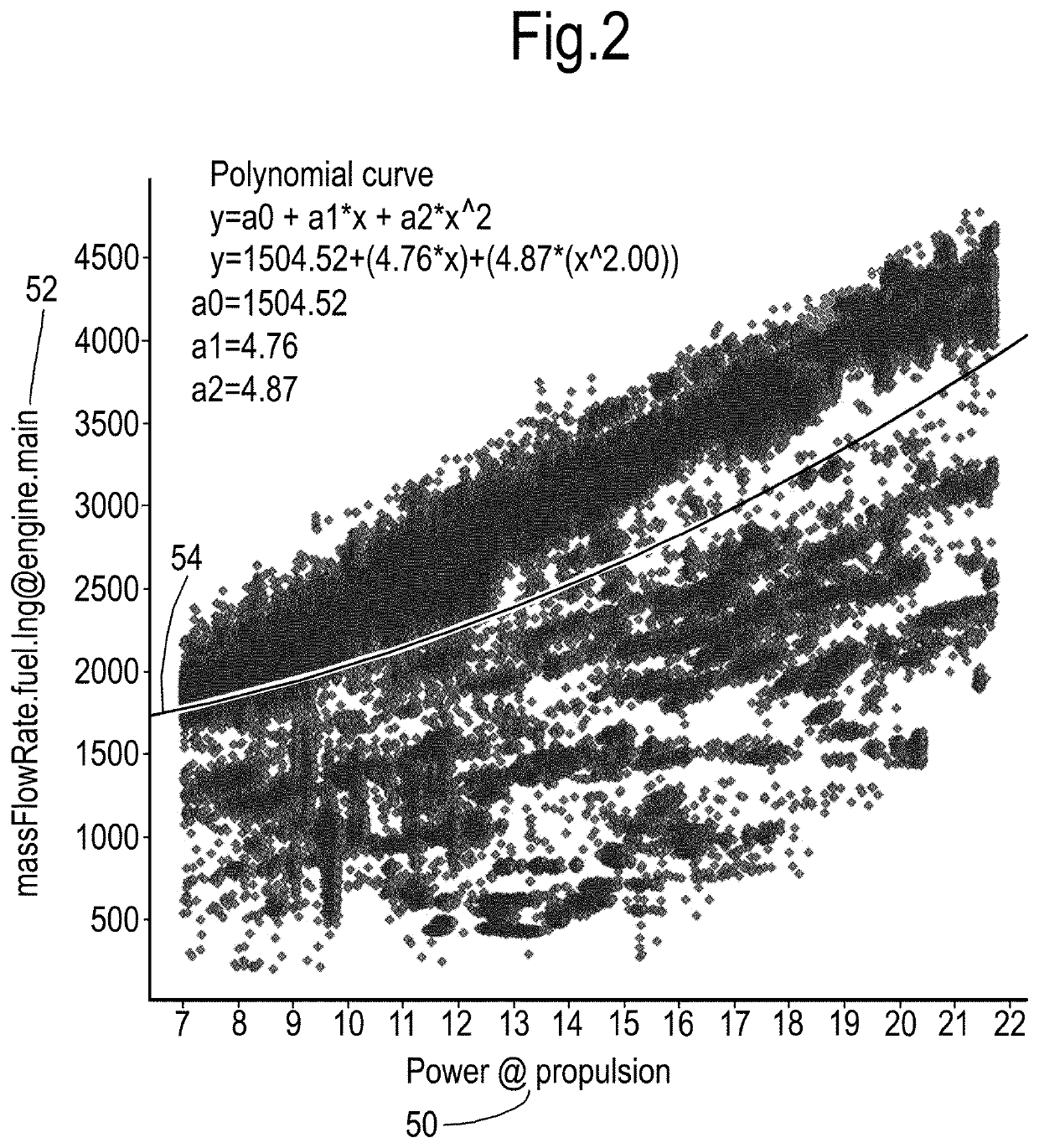Method and system for reducing vessel fuel consumption
- Summary
- Abstract
- Description
- Claims
- Application Information
AI Technical Summary
Benefits of technology
Problems solved by technology
Method used
Image
Examples
Embodiment Construction
[0041]Certain terms used herein are defined as follows: “LNG” refers to liquefied natural gas, which is typically cooled to at least a temperature whereat the gas can be in the liquid phase at about 1 bar pressure; for liquefied methane this temperature is about minus 162 degree C.;
[0042]“draft” may refer to depth of water needed to float a ship; depth below the water line to the bottom of a vessel's hull; and depth of water drawn by a vessel. In the current disclosure, “draft” may in particular refer to the depth below the water line to the bottom of the hull of the vessel; and
[0043]“trim” refers to the position of a vessel with reference to the horizontal; In other words, “trim” refers to the difference between the draft of a forward end and the draft of an aft end of the vessel.
[0044]Any time that a vessel sails at a given speed, whether carrying a cargo or under ballast, an optimum trim and draft condition exists for that vessel. For a vessel in service a large amount of data is...
PUM
 Login to View More
Login to View More Abstract
Description
Claims
Application Information
 Login to View More
Login to View More - R&D
- Intellectual Property
- Life Sciences
- Materials
- Tech Scout
- Unparalleled Data Quality
- Higher Quality Content
- 60% Fewer Hallucinations
Browse by: Latest US Patents, China's latest patents, Technical Efficacy Thesaurus, Application Domain, Technology Topic, Popular Technical Reports.
© 2025 PatSnap. All rights reserved.Legal|Privacy policy|Modern Slavery Act Transparency Statement|Sitemap|About US| Contact US: help@patsnap.com


